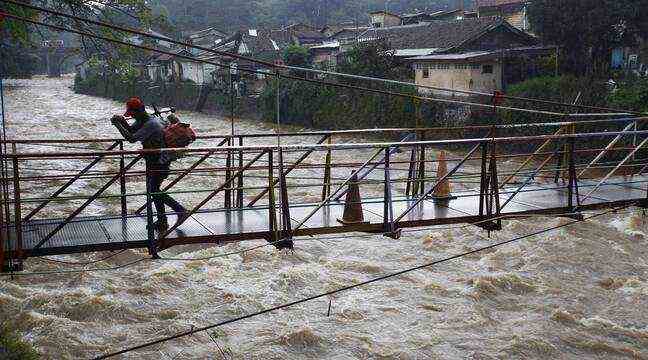Already back. Only five months after being declared terminated by theWorld Meteorological Organization, La Niña is said to be about to reappear. This large-scale cooling of surface water climatic phenomenon was observed from August 2020 to May 2021 in the central and eastern equatorial Pacific. According to the WMO, there is a 40% chance that this episode will return by the end of the year.
“Despite the La Niña phenomenon, which normally has the effect of cooling the climate, the temperatures measured on the land surface should be above average between September and November, especially in the northern hemisphere”, underlines the organization.
Climate change amplifies the effects of La Niña
The impact of La Niña, which occurs every two to seven years, is felt over a large part of the Earth in the form of variations in atmospheric pressure, winds and precipitation, with effects usually the reverse of a another phenomenon, El Niño. But climate change caused by human activities influences these phenomena.
“Anthropogenic climate change is amplifying the effects of natural phenomena such as La Niña and increasingly influencing our weather conditions, including more intense heat and drought (and the associated risk of wildfires). forest) as well as record rainfall and flooding, ”said WMO Secretary-General Petteri Taalas. “We have tragically witnessed this in recent months in almost every region of the world. Climate change is increasing the severity and frequency of disasters, ”he said, referring to the fires that hit the western United States or to Hurricane Ida, which drowned New York in a waterspout. ‘water.
Rainfall below normal in South America
Despite the expected resurgence of a low-intensity La Niña episode, above-average sea surface temperatures are expected to influence air temperatures for the period between September and November 2021, notes the WMO. Temperatures are expected to be well above average in east-central North America, far north Asia and the Arctic, as well as in central and eastern Africa, she said. and in southern South America.
There is an increased likelihood of below normal precipitation in many areas of southern South America. Much of the Mediterranean, which stretches across the Arabian Peninsula and Central Asia, and southern Central and East Africa, are also expected to experience below normal precipitation.

